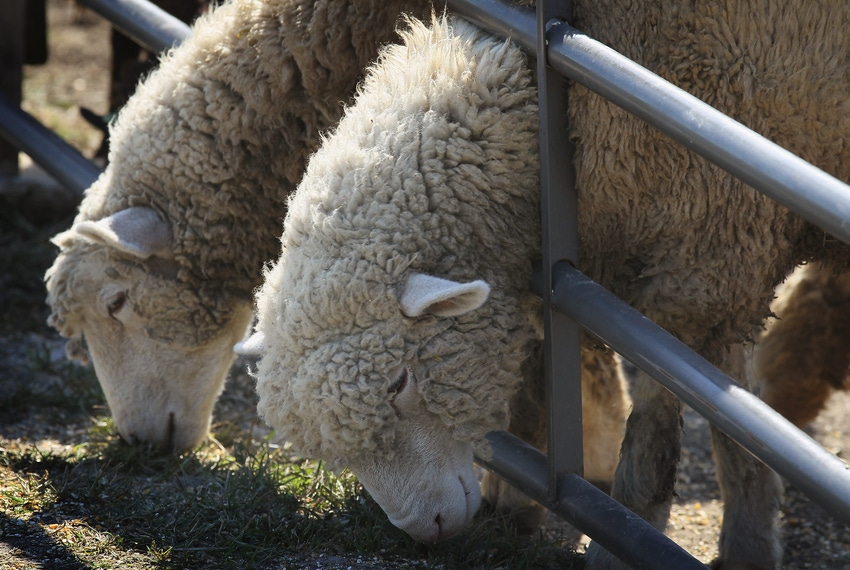To even out lamb supply during the year, industry must shift lambing season or alter rate of gain to reach market at a different time.
July 19, 2018

The seasonality of U.S. lamb production is an issue that causes inefficiencies and market volatility for the lamb industry. A new white paper pulls together information on the topic so that sheep producers and lamb feeders can make informed decisions about management systems to better supply a more consistently available product, according to an announcement from the American Lamb Board (ALB).
"Seasonality of the US Lamb Industry: A Review of Current Information" is now available for download at LambResourceCenter.com in its Production Resources section.
This white paper covers both traditional and nontraditional U.S. lamb markets and compiles relevant data from the Livestock Marketing Information Center, U.S. Department of Agriculture, industry reports on lamb sales and other sources, ALB said. The paper discusses factors that affect seasonal supply, the role of U.S. and imported lamb, the impact on all industry segments, opportunities to alter the U.S. seasonal supply and case studies of producers who have shifted season of production to meet the needs of their customers.
The Roadmap Implementation Committee, which includes representatives from all industry sectors and national organizations, commissioned a team of industry experts to develop the seasonality white paper. ALB said it is the hope of the committee and U.S. industry organizations that this white paper will help identify realistic opportunities throughout the industry that will have big impacts on domestic lamb supplies and improve quality and consistency year-round.
ALB, which manages the U.S. lamb checkoff, provided publication of the white paper, and the American Sheep Industry Assn.'s Let's Grow program is conducting a free webinar on Aug. 21.
The white paper states that an estimated 80% of the U.S. lamb crop is born in the first five months of the calendar year. As a result, there are periods throughout the year when the supply of lamb is inconsistent, which creates industry issues such as market price volatility, an inadequate supply of market-ready lambs and an irregular supply of carcass size and quality, ALB said.
To understand why seasonality is such an important issue for the U.S. lamb industry, it's necessary to get a grasp on the needs of traditional and nontraditional markets. The white paper concludes that these are two very different markets, but both are affected by an inconsistent seasonal supply of lamb, ALB said. However, the shortages of lamb occur at two completely different times of the year.
The traditional market prefers a larger and fatter lamb that weighs 120-160 lb. live weight, which takes 8-14 months from birth to harvest. Therefore, the supply of most late-winter and spring-born lambs to the traditional market occurs from November through June.
Lamb retail sales are greatest during the Christmas and Easter holiday seasons, with strong demand for legs and racks, and there has been a considerable increase in sales of ground lamb at retail — nearly doubling in four years.
According to the white paper, if surplus lambs in the feedlot during winter and spring cannot be harvested on time, they remain in the feedlot until supplies diminish. These lambs are harvested at much heavier weights than is ideal for their frame size. Variability in carcass size makes it challenging to supply a fresh, consistent product to the consumer, ALB said.
The nontraditional market has grown considerably in the last decade, with the largest consumer segment typically immigrant families celebrating religious holidays, as seen with a spike in demand during the Muslim month-long daytime fasting period of Ramadan, when lamb is often part of the evening feast.
Lighter, leaner lambs are generally preferred, with the highest volume of lambs entering the nontraditional market at 50-90 lb. live weight and typically three to seven months old at harvest. The largest supplies of these market-ready lambs are in the spring and summer, with shortages occurring in the fall and winter.
Frozen lamb is not well received by customers, so this is not the definitive answer to seasonal supply issues, although it can help in some situations, ALB said. It noted that a majority of chefs and retailers are averse to buying frozen lamb because the sentiment is that, since domestic beef, pork and poultry are available fresh, then lamb should be, too. However, some cuts, such as shanks, are an exception.
To even out the supply of lamb through the year, the industry must shift lambing season or alter the rate of gain so the lambs reach market at a different time, the white paper suggests. This shift in production could present an opportunity for producers to capitalize on premium prices by marketing lambs during times of short supplies. However, every producer will need to evaluate the options, taking into consideration such factors as flock ability to breed out of season, facility and labor availability and feed costs, the committee wrote.
In recent years, ALB said the market appears to have provided a price incentive to lamb producers who can adjust lambing and harvest times.
ALB is an industry-funded national promotion, research and information organization (national checkoff program) that represents all sectors of the American lamb industry, including producers, feeders, seedstock producers and processors. ALB is overseen by USDA, and the board's programs are supported and implemented by staff in Denver, Colo.
The program is funded through mandatory assessments collected under the federally mandated lamb checkoff program, which assesses 7 cents/lb. live weight paid by the seller of sheep or lambs and a first handler assessment of 42 cents per head paid by the entity that owns sheep or lambs at the time of slaughter.
You May Also Like


.png?width=300&auto=webp&quality=80&disable=upscale)
